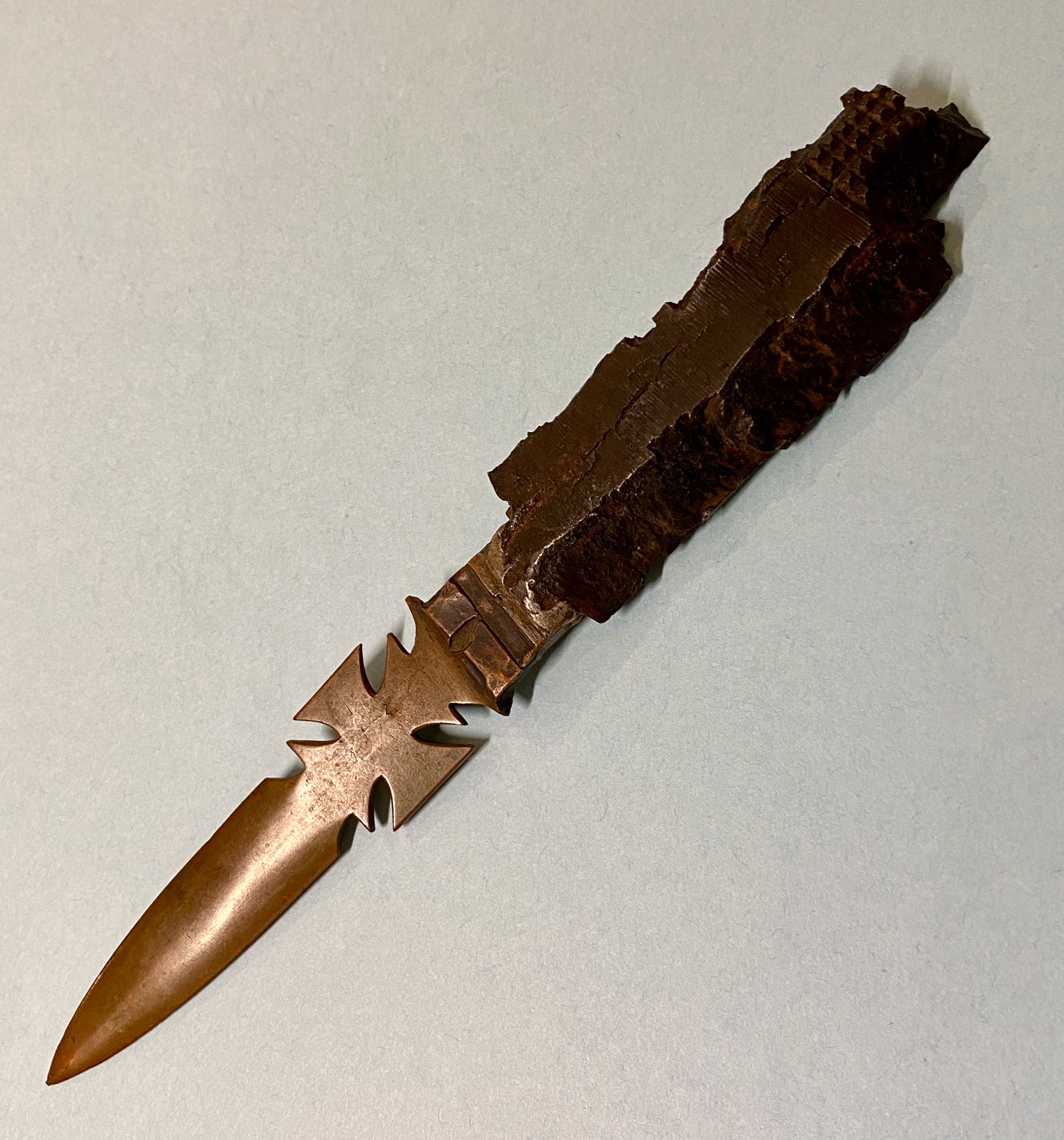

Title: WW1 German Iron Cross Antique Trench Art Shrapnel Knife
Shipping: $29.00
Artist: N/A
Period: 20th Century
History: Art
Origin: Central Europe > Germany
Condition: N/A
Item Date: N/A
Item ID: 463
A Rare WW1 German Iron Cross Antique Trench Art Shrapnel Knife. The German Iron Cross Antique Trench Art Shrapnel Knife is a unique piece of history that embodies the bravery and ingenuity of soldiers during World War I. The Iron Cross was a military decoration awarded by the German Empire during WWI. It was awarded for bravery in combat, and many soldiers wore the medal with pride. However, as the war dragged on and casualties mounted, soldiers began to turn to more creative ways of displaying their valor. One such way was through the creation of trench art, which was typically made by soldiers in their downtime using materials found on the battlefield. These pieces ranged from simple carvings to elaborate sculptures and jewelry, and were often sold or traded as souvenirs. The German Iron Cross Antique Trench Art Shrapnel Knife is believed to have been created by a German soldier using materials he found in the trenches. The handle of the knife is made from a piece of shrapnel, while the blade itself is made from an old bayonet. The Iron Cross medal is affixed to the handle, symbolizing the soldier's bravery and dedication to his country. The knife likely saw use in the trenches, where it would have been a useful tool for cutting through wire and other obstacles. It may also have been used as a weapon in close combat. After the war ended, the knife was likely brought home by a returning soldier as a souvenir. It may have been passed down through the family or sold to a collector, eventually finding its way into the hands of a modern-day collector or museum. Today, the German Iron Cross Antique Trench Art Shrapnel Knife serves as a reminder of the bravery and resourcefulness of soldiers during World War I. It is a testament to the human spirit and the ability of individuals to create something beautiful in the midst of chaos and destruction.
Soldiers made trench art during the wars for a variety of reasons, ranging from personal expression to economic necessity. During World War I and World War II, soldiers spent long periods of time in the trenches and had little to do during their downtime. To pass the time and distract themselves from the horrors of war, they turned to creative pursuits. Many soldiers found that carving or molding materials, such as shell casings, metal scraps, and bone, into decorative objects helped them cope with the stress and boredom of trench life. Trench art also served as a form of remembrance and commemoration. Soldiers often created pieces to honor fallen comrades or to remember significant events, such as battles or other milestones. Some pieces were also made to send home to loved ones as gifts or to sell as souvenirs to supplement their meager pay. In addition to its psychological and emotional benefits, trench art also served as a way for soldiers to repurpose the materials around them. The war effort required the mass production of weapons and equipment, which left behind a large amount of scrap metal and other materials. Soldiers were resourceful and saw the potential in these discarded materials, using them to create new objects that were both beautiful and functional. Today, trench art is valued not only as a historical artifact but also as a work of art in its own right. It offers a unique insight into the lives and experiences of soldiers during wartime, and serves as a reminder of the human capacity for creativity and resilience in even the most difficult circumstances.